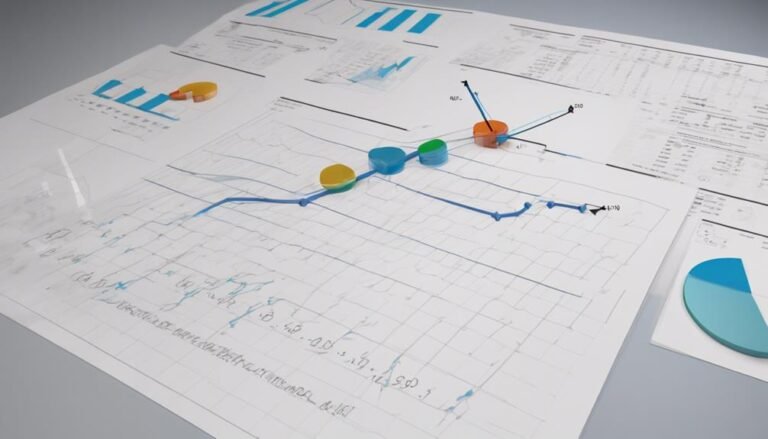Documentary Collection: Definition, Types, and How It Works
Documentary collection in trade finance involves exchanging documents for payment, reducing risks and costs. There are two main types: Documents Against Payment (D/P) and Documents Against Acceptance (D/A), each with specific payment methods. Understanding the process is essential, as it hinges on trust and legal systems. The exchange entails key documents like invoices and certificates, and success depends on parties honoring commitments. Mitigating risks requires careful consideration of payment methods and robust contracts. Understanding these aspects is critical for efficient international trade transactions.
Key Takeaways
- Documentary collection is a trade finance method with reduced payment risk and lower costs.
- Types include Documents Against Payment (D/P) and Documents Against Acceptance (D/A) based on risk tolerance.
- Involves exchanging documents for payment, requiring trust and a strong legal framework.
- Process includes initiating sale agreement, delivering goods, submitting documents to the bank, and receiving payment.
- Risks include non-payment by the buyer, especially with time drafts, mitigated by secure methods and detailed contracts.
Definition of Documentary Collection
The documentary collection is a form of trade finance where exporters receive payment only after banks exchange the necessary shipping documents. This method offers benefits such as reduced payment risk for the exporter, lower cost compared to letters of credit, and increased control over document release.
However, challenges of documentary collection include potential payment delays if the importer defaults or disputes the documents, reliance on the importer's willingness to pay upon document presentation, and limited legal recourse in countries with weak contract enforcement. Despite its advantages, documentary collection requires trust between trading partners and a robust legal framework to mitigate risks effectively.
Types of Documentary Collection
In the domain of documentary collection, there are two distinct types that play pivotal roles in international trade finance transactions. These types are Documents Against Payment (D/P) and Documents Against Acceptance (D/A). The choice between these types depends on the agreement between the exporter and importer regarding the payment method and the level of risk tolerance. Below is a table highlighting the key differences between Documents Against Payment and Documents Against Acceptance:
| Types of Documentary Collection | Payment Method | Collection Process Efficiency |
|---|---|---|
| Documents Against Payment (D/P) | Payment at sight | Payment made before document release |
| Documents Against Acceptance (D/A) | Payment on specified date | Buyer accepts time draft for document release |
Understanding these different payment methods is essential for ensuring the efficiency of the collection process.
How Documentary Collection Works
An intricate process of financial exchange unfolds in the domain of international trade through the mechanism known as Documentary Collection. In this method, payment occurs as documents are exchanged between the exporter and importer's banks.
Document requirements include essential paperwork such as the commercial invoice, certificate of origin, insurance certificate, packing list, and an important document known as the bill of exchange or draft.
This process typically involves two types: documents against payment, where the importer pays at sight, and documents against acceptance, where payment is made on a specified date. The risk for the seller is reduced when payment is received at sight.
This method is more secure when conducted between trusted parties or within legal systems with strong enforcement.
Steps in Documentary Collection Process
Initiate the documentary collection process by establishing a sale agreement between the buyer and seller for the efficient exchange of goods and associated documents. Exporter responsibilities include delivering the goods to the port or export location and sending the necessary documents to their bank. Importer obligations involve paying or accepting the draft presented by the exporter's bank to release the documents. Below is a table summarizing the steps in the documentary collection process:
| Step | Exporter Responsibilities | Importer Obligations |
|---|---|---|
| Sale Agreement | Establish with the buyer | Agree to terms of the sale |
| Goods Delivery | Deliver to port or export location | Receive and inspect the goods |
| Document Submission | Send to exporter's bank | Await documents for payment |
| Bank Processing | Forward documents to importer's bank | Pay or accept draft |
| Document Release | Await document release | Release upon payment/acceptance |
Risks Associated With Documentary Collection
What are the inherent risks that exporters and importers face when engaging in a documentary collection process for trade transactions?
In documentary collections, exporters may encounter higher risk when using time drafts, as the buyer's bank could release documents upon accepting the draft. This poses a challenge if the buyer fails to honor the payment commitment. Conversely, with sight drafts, the seller faces limited risk since the buyer's bank retains the documents until payment is made.
To mitigate risks, parties should make use of secure payment methods and detailed contracts. Payment security is vital in documentary collections to safeguard against non-payment or delayed payment, requiring careful risk assessment and appropriate measures for successful trade transactions.
Conclusion
In summary, documentary collection serves as a structured method of trade finance, involving the exchange of important documents between banks to facilitate payment in international transactions.
While offering a systematic approach to trade, it also entails risks that businesses must navigate carefully.
Understanding the types and process of documentary collection is essential for businesses to effectively manage risks and guarantee successful global trade operations.







